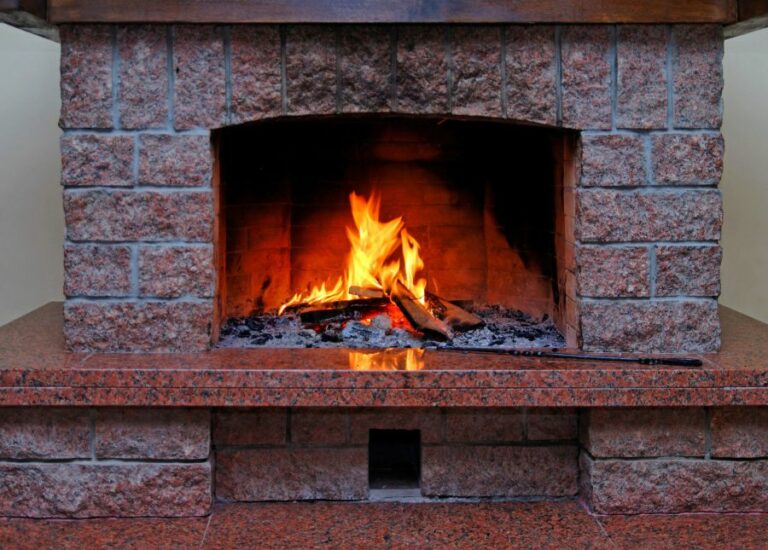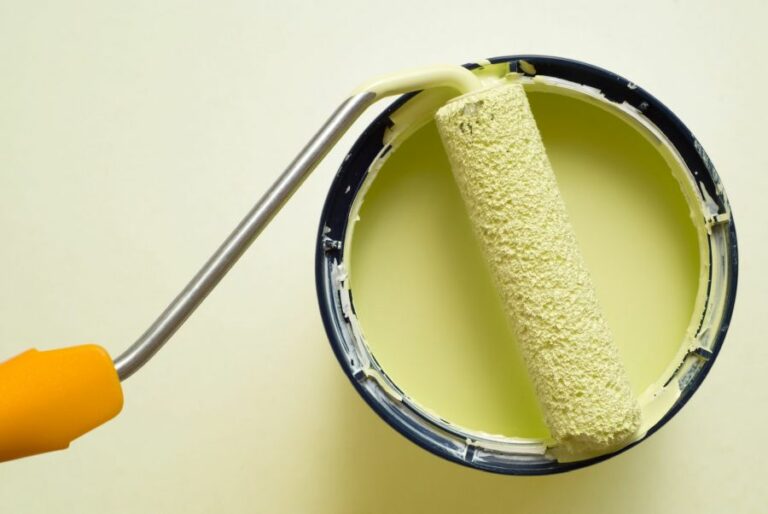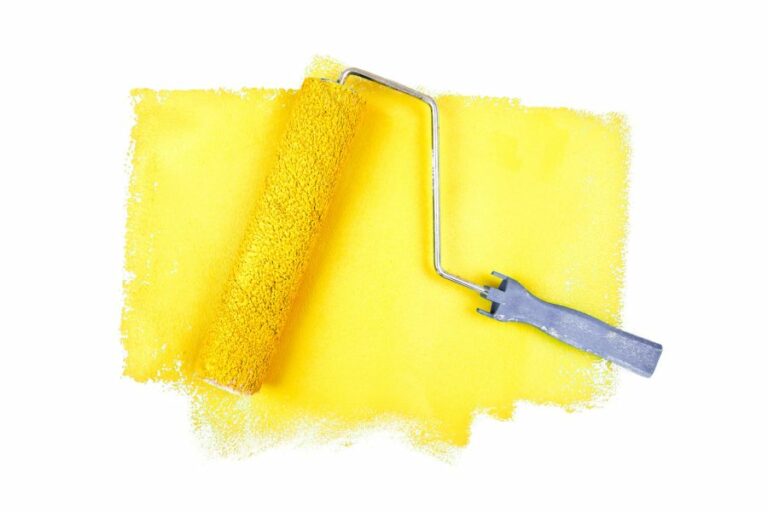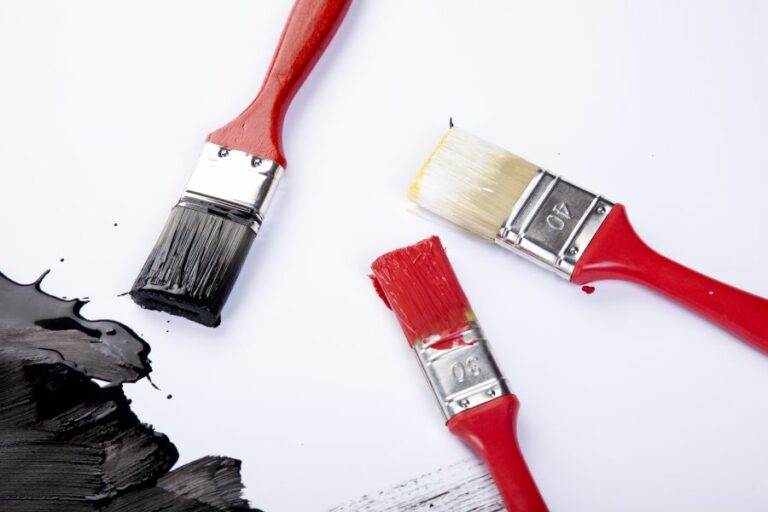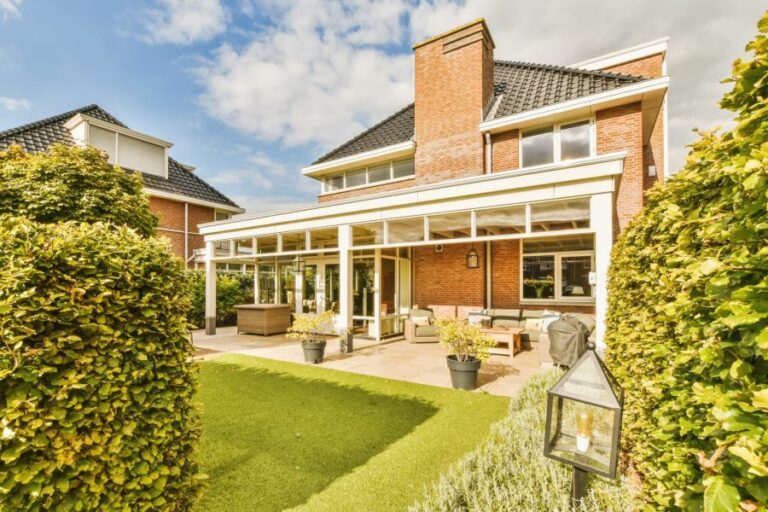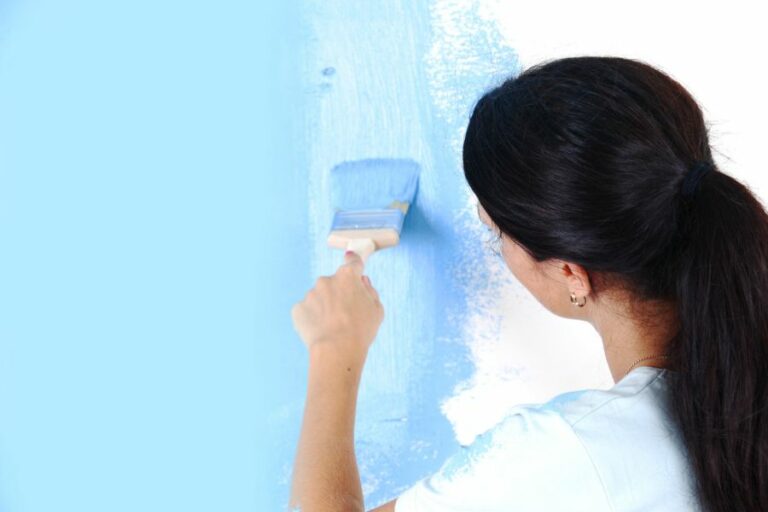Gray Outdoor Paint, 25 Things You Should Know
Welcome to my latest post, where we explore the world of gray outdoor paint! Discover how this versatile hue can give your exterior spaces a fresh, modern, and elegant touch. I’ll unveil the top gray paint shades to suit various styles and environments while providing tips to ensure a flawless application.
Gray outdoor paint:
Gray outdoor paint is a popular, versatile, and timeless option for exterior walls and facades, fencing and gates, outdoor furniture, and more. Its aesthetic appeal, compatibility with other colors, and durability make it an attractive choice for residential and commercial settings. Gray paint offers practical benefits such as UV resistance, low maintenance, and environmentally friendly options.

Discover the beauty of gray outdoor paint as we explore its versatility, durability, and timeless appeal. Uncover expert tips on selecting the perfect shade, learn about top brands, and get inspired by stunning exterior transformations that redefine curb appeal.
Contents
- 1 The Versatility and Timelessness of Gray Outdoor Paint
- 2 What is the Most Widely Used Gray Color for Exterior Surfaces?
- 3 Is the Gray Color Suitable for Exterior Design?
- 4 Which Type of Paint is Most Suitable for Exterior Applications?
- 5 What is the most suitable shade of gray for painting the exterior of a house?
- 6 What is the Most Prevalent Shade of Gray Paint in Popularity?
The Versatility and Timelessness of Gray Outdoor Paint
Gray outdoor paint has long been a popular choice among both professional designers and do-it-yourself enthusiasts. As a versatile and attractive option for many different types of applications, gray paint has shown a remarkable ability to withstand the test of time.
• Gray Outdoor Paint: Aesthetic Appeal and Compatibility
Gray paint is often recognized for its aesthetic appeal and compatibility with other colors in various contexts.
Gray is a neutral color that can complement many different design styles and architectural elements. This makes it an ideal choice for those seeking to create a visually appealing and harmonious outdoor space.
– Exterior Walls and Facades
Gray outdoor paint is well-suited to both residential and commercial exteriors. The simplicity and elegance of gray can provide an understated backdrop for other architectural features, such as trim or decorative elements.
It is important to consider the tone and shade of gray in relation to the other colors and materials used on the building’s exterior.
– Fencing and Gates
Gray is a classic choice when it comes to paint, fencing, and gates. With many shades to choose from, gray can either provide a subtle contrast to the surrounding environment or create a bold, eye-catching statement.
Gray paint is an ideal option for those who wish to maintain a timeless, traditional look while also providing some protection against the elements.
– Outdoor Furniture
Gray outdoor paint can also be used to enhance outdoor furniture’s appearance. It can be painted onto metal, wooden, or even plastic surfaces to transform the look of garden benches, patio tables, and more.
The wide range of gray shades available means that it can easily be matched to existing outdoor decor or used to create an entirely new style.
• Benefits of Gray Outdoor Paint
In addition to its visual appeal, gray outdoor paint offers a number of practical benefits. These include:
– Durability
Gray paint is well known for its durability, especially when formulated for outdoor use. High-quality gray outdoor paints are designed to withstand harsh weather conditions and resist fading, chipping, or peeling over time.
This makes gray paint a cost-effective choice for those who want to invest in a long-lasting finish.
– UV Resistance
Many gray outdoor paints have UV-resistant properties, meaning that they can resist the damaging effects of the sun’s ultraviolet rays. This helps prevent the paint’s fading and degradation and ensures a longer-lasting, more vibrant finish.
UV resistance is particularly important for outdoor applications where exposure to sunlight is constant and unavoidable.
– Low Maintenance
Gray outdoor paint is typically low maintenance, requiring little more than occasional cleaning to keep it looking fresh and vibrant. This can save time and effort that would otherwise be spent on more labor-intensive maintenance tasks, allowing you to enjoy your outdoor space more.
– Environmentally Friendly Options
With growing concerns about the impact of materials on the environment, gray outdoor paints with low VOCs (volatile organic compounds) are available on the market.
Low VOC paints release fewer harmful chemicals into the environment, making them a more eco-friendly choice for those concerned about the environment.
• Tips for Choosing the Right Shade of Gray Outdoor Paint
With so many shades of gray paint to choose from, it can be overwhelming trying to decide on the right one for your project. Here are some helpful tips to keep in mind when selecting a shade:
- Lighter shades of gray can create a softer, more tranquil atmosphere perfect for relaxation areas or spaces with a contemporary design.
- Darker shades of gray can provide a more dramatic and striking aesthetic, ideal for stand-out features, such as gates or fences with intricate designs.
• Final Thoughts
Gray outdoor paint is a versatile, timeless, and durable choice for outdoor projects, making it a popular option for many home and business owners.
With its aesthetic appeal, practical benefits, and wide range of shades available, gray paint is a solid choice for those looking to enhance their outdoor space or refurbish exterior surfaces.
What is the Most Widely Used Gray Color for Exterior Surfaces?
Gray has significantly gained popularity over the past few years as an exterior color choice. With a growing interest in modern, minimalist design styles, the gray color palette has become a prominent choice for home exteriors.
It is aesthetically pleasing, versatile, and timeless, making it a great choice for homeowners looking to refresh their home’s exterior.
• The Rise of Gray in Home Exteriors
In recent years, gray has become a dominant color choice in both exterior and interior design. It is favored for its neutral and calming qualities, which make it an excellent option for various architectural styles.
Gray hues provide a refined and understated elegance, lending a sense of sophistication to homes. Additionally, gray is highly compatible with a wide range of other colors, making it a perfect choice for those looking to achieve a harmonious color scheme.
– Gray’s Versatility and Timelessness
One of the reasons gray is a popular choice is its versatility. Gray complement various design styles, from traditional to contemporary and everything in between. It provides a perfect canvas for highlighting architectural details, landscaping, and accent colors.
Furthermore, gray is a timeless color that never goes out of style, making it a safe choice for homeowners who want to invest in their home’s future value.
• The Most Popular Exterior Gray Color: Agreeable Gray
While many shades of gray are popular for home exteriors, the most favored shade is Agreeable Gray (SW 7029), a Sherwin-Williams color. This warm gray hue has become the go-to choice for homeowners and designers alike due to its versatility and mass appeal.
– What Makes Agreeable Gray So Popular?
Being a warm gray, Agreeable Gray has undertones that lean more towards taupe or beige rather than cool blue or green shades. This warmth adds an inviting and soft touch to the exterior, creating a pleasant and welcoming atmosphere.
Its balanced and neutral tone works seamlessly with various design styles, making it an ideal choice for a wide range of homes.
In addition to its aesthetic appeal, Agreeable Gray is also highly practical. Its versatility allows it to work well with a range of other colors, complementing different accent and trim colors effortlessly.
This flexibility makes it easy for homeowners to experiment with their exterior color scheme without worrying about whether their choices will clash with Agreeable Gray.
– Recommendations for Accent Colors with Agreeable Gray
Based on experience, there are several recommendations for accent colors that work well with Agreeable Gray:
- Whites: A crisp white trim creates a striking contrast against Agreeable Gray, giving the home a clean and stylish appearance. Examples of popular white shades include Sherwin-Williams Extra White (SW 7006) and Pure White (SW 7005).
- Blues: Blue hues pair nicely with Agreeable Gray, imparting a calm and coastal feel to the home. Some popular blue shades for accents include Sherwin-Williams Naval (SW 6244) and Slate Tile (SW 7624).
- Greens: Green is another winning choice when paired with Agreeable Gray, creating a tranquil and sophisticated look. Sherwin-Williams Jasper (SW 6216) and Privilege Green (SW 6193) are great options for green accents.
• Tips for Choosing the Right Gray for Your Home Exterior
While Agreeable Gray is a popular choice, selecting a gray shade that works best for your home and location is essential. Consider the following factors when choosing an exterior gray color:
- Sunlight and geography: The intensity and angle of sunlight can affect the appearance of gray shades on your home’s exterior. Warmer grays tend to look better in cooler climates, while cooler grays are often more suited to warmer climates.
- Architectural style: The architectural style of your home might also influence your color decision. Certain grays may be more suitable for specific styles.
- Neighborhood trends: While you want your home to stand out, it’s also essential to consider the general aesthetic of your neighborhood. In some cases, choosing a more uncommon shade can have a negative impact on your home’s value.
• Conclusion
The most popular exterior gray color, Agreeable Gray, is a versatile and timeless choice for homeowners today. Its adaptability allows it to accentuate a wide range of design styles and work harmoniously with various accent colors.
When choosing the right gray for your home exterior, considering factors such as sunlight, architectural style, and neighborhood trends will ensure that you achieve a visually appealing and valuable result.
Is the Gray Color Suitable for Exterior Design?
The gray color is widely used in the exterior design of residential and commercial buildings. This versatile color is not only attractive but also offers numerous benefits.
• Advantages of Gray Exterior
– Timelessness
One of the primary benefits of choosing gray for your exterior is its timeless appeal. The neutral color has been in use for as long as architecture itself, making it a safe choice for those seeking to create lasting designs.
Timeless exteriors keep a home appealing and trendy without needing to frequently repaint.
– Versatility
Another significant benefit of incorporating gray into your building’s design is its ability to complement a wide array of architectural styles. From modern to traditional, minimalist to extravagant, gray can seamlessly blend with various styles, making it an excellent choice for designers and homeowners alike.
– Enhances Other Colors
Gray is a neutral color, making it an ideal choice for those looking to add pop to their exterior. When paired with vibrant shades in doors, window trims, or accents, gray can significantly enhance and elevate the overall appearance of your home.
– Low Maintenance
The gray color is known for its ability to mask dirt, dust, and grime, making it a low-maintenance choice for building exteriors. With the lack of color contrast in the finish, gray exteriors are more forgiving and will still look presentable even with minimal upkeep.
• Disadvantages of Gray Exterior
– Lack of Warmth
Gray exteriors sometimes give off a cold and uninviting vibe, particularly in dark shades or flat finishes. For this reason, selecting the right shade, accent colors, and textures is crucial to create a welcoming and cozy atmosphere.
– Overuse in the Neighborhood
The popularity of gray in exterior design may make your home seem too similar to neighboring homes. To avoid the monotonous appearance, choosing unique shades and designs that will help differentiate your house from the others is essential.
• Choosing the Right Shade and Finish
With a wide range of gray shades available in the market, finding the perfect one that suits your taste and complements your home’s style can be daunting. Below are a few suggestions to help you make the right decision:
– Light Gray
Light gray exteriors are ideal for those who want a subtle and classy look. It adds just enough depth and character without overpowering your home’s design. Light gray is especially suitable for smaller homes as it can create the illusion of more space while still providing an appealing aesthetic.
– Dark Gra
If you’re looking to create a bold and striking exterior, then choosing a dark gray shade can be an excellent choice. Dark gray exteriors are more dramatic and sophisticated, making them ideal for larger homes or buildings that wish to create a strong presence.
– Complementary Finishes
The selected shade of gray will significantly depend on the desired finish. Textured finishes can add depth and warmth to lighter shades while creating a more inviting appearance.
Meanwhile, smooth finishes tend to deliver a more minimalist and contemporary look that may not be suitable for those aiming for a cozy home exterior. Consider the overall style of your home as well as the other materials and colors being used before settling on the perfect shade and finish.
• Recommended Combinations with Gray
To create an appealing exterior using gray hues, consider these popular combinations:
- Gray and White: A classic combination that blends modernity and elegance. You can create a fresh and clean appearance by using gray as the primary color for the walls and white for trims, doors, and windows.
- Gray and Wood: Combining natural wood elements with gray can create a warm and inviting appearance. The mix of textures and materials adds depth and visual interest to your exterior.
- Gray and Bold Accents: To create a visually engaging exterior, you can choose to add bold accent colors like red, blue, or green in the form of your front door, shutters, or trim. These colors can enhance the overall appearance and create a unique aesthetic.
In conclusion, gray can prove to be an excellent color choice for the exterior of both residential and commercial buildings. Gray is a practical yet fashionable choice with its timeless appeal, versatility, and low maintenance requirements.
However, selecting the correct shade, finish, and accent colors is crucial to ensure a warm, inviting, and visually appealing outcome.
Which Type of Paint is Most Suitable for Exterior Applications?
Exterior paint is an essential element that breathes life into any building, transforming a dull and lifeless structure into an eye-catching piece of art.
But choosing a high-quality paint that can withstand various weather conditions and resist fading, chipping, and cracking can be confusing, especially with so many options available in the market.
• A Primer on Exterior Paint Types
1. Water-Based Latex Paints
Water-based latex paints are popular choices for many homeowners and professional painters because of their flexibility, ease of use, and quick drying time.
Latex paints offer excellent adhesion, allowing the paint to expand and contract with changing temperatures, reducing the chances of peeling and cracking. Furthermore, latex paints are easy to clean. Simply using soap and water does the trick.
One of the best water-based latex paints available in the market is Behr Premium Plus Exterior Paint & Primer, offering excellent durability and coverage, and protection against mildew, water, and UV rays.
2. Alkyd or Oil-Based Paints
Oil-based paints, also known as alkyd paints, have been the traditional choice for exterior projects due to their excellent durability, smooth finish, and resistance to moisture.
However, they take longer to dry compared to water-based latex paints, and they require mineral spirits or paint thinner for cleaning brushes and other painting equipment.
A top-quality alkyd paint to consider is Benjamin Moore’s Aura Exterior Paint, which provides superior color retention, fade resistance, and exceptional durability against the elements.
3. Elastomeric Paints
Elastomeric paints are an advanced type of acrylic coating specifically designed for exterior surfaces. They can be applied to various types of materials, including masonry, stucco, and weathered wood.
Elastomeric paints are known for their incredible flexibility and ability to bridge small cracks and gaps in the surface, making them an excellent choice for older homes or buildings that may require additional protection against water intrusion.
Sherwin-Williams SuperPaint Exterior Acrylic Latex is an example of a high-performing elastomeric paint, delivering outstanding adhesion and hiding capabilities and great resistance to fading, chalking, and mildew growth.
• Choosing the Right Paint Sheen
Selecting the appropriate paint sheen is equally important as choosing the right type of paint. Here’s a brief overview of the commonly used paint sheens and their recommended usage:
1. Flat or Matte
Flat paints provide a smooth, non-reflective finish, which is perfect for hiding surface imperfections such as cracks, nail holes, and rough textures. This type of sheen is suitable for exteriors with aged wooden siding or stucco, where achieving a flawless finish is challenging.
2. Satin or Eggshell
Satin or eggshell finishes fall between flat and semi-gloss sheens, offering a subtle shine that adds depth and richness to the colors. These sheens are known for their excellent durability, mildew resistance, and stain repellency.
Satin and eggshell finishes work well on clapboard or shingle siding, as well as doors, window trims, and shutters.
3. Semi-Gloss
Semi-gloss paints provide a sleek, reflective finish that is also highly resistant to dirt, moisture, and mildew. This type of sheen is ideal for accentuating architectural details such as entry doors, window trims, and other decorative features.
• Prep Work Before Painting
No matter how high-quality your chosen exterior paint may be, proper surface preparation is a must to ensure a long-lasting and professional-looking result. Here’s a simple step-by-step guide to preparing your surface:
- Clean the surface thoroughly, removing dirt, dust, mildew, and chalky residue.
- Scrape off loose, peeling, or flaking paint using a paint scraper or wire brush.
- Sand the surface to remove any remaining rough edges, ensuring a smooth finish.
- Repair any cracks, holes, or dents with an appropriate filler or caulk.
- Apply a high-quality primer to maximize paint adhesion and improve overall durability.
• The Final Stroke
Selecting the best paint for an exterior project ultimately depends on various factors, including the surface material, climate, and desired appearance.
Whether you opt for durable and flexible latex paints, traditional oil-based paints, or advanced elastomeric coatings, investing in a high-quality product will ensure that your hard work lasts longer and looks better.
Don’t forget to choose the right sheen and undertake proper surface preparation to achieve a professional and long-lasting result.
Type of Paint | Pros | Cons |
|---|---|---|
Acrylic Latex | Durable, water-resistant, easy to clean, dries quickly, prevents mildew | May not adhere well to certain surfaces without proper priming, may not be suitable for some extreme weather conditions |
Oil-based | Long-lasting, adheres well to various surfaces, resistant to wear and tear | Takes longer to dry, strong odor, requires paint thinner for cleanup, may be less environmentally friendly |
100% Acrylic | Long-lasting, resistant to cracking and peeling, excellent adhesion, good color retention | Costly, may not be suitable for certain surfaces or climates |
Textured Masonry Paint | Good for uneven or rough surfaces, offers durable protection, helps conceal minor imperfections | Can be difficult to apply, may not adhere well to certain substrates without proper priming |
Enamel | Highly durable, smooth finish, resistant to moisture, abrasions and scratches, withstands outdoor conditions | Strong odor, requires paint thinner for clean-up, may not adhere well to certain surfaces without priming |
What is the most suitable shade of gray for painting the exterior of a house?
• Introduction to Gray: A Timeless Classic
Gray, often considered a neutral and conservative choice for home exteriors, has timelessly captivated homeowners, architects, and designers alike.
Its versatile shades and undertones provide a wide array of options that can subtly deliver a statement – balancing between sophistication and modernity, stability and practicality, and warmth and adaptability.
• Understanding Gray Undertones: From Warm to Cool
Before we explore specific bestselling shades of gray, it is important to establish a foundation on the subject of undertones.
Based on its undertone, gray paint usually falls into one of three categories: warm, cool, or neutral grays. Understanding the undertones is essential when selecting the perfect paint color for your home’s facade.
– Warm Grays
- Undertones: Beige, brown, and taupe
- Vibe: Inviting, cozy, and comforting
- Best Suited For: Traditional-style homes and homes in regions with cooler climates
Warm grays are beautiful shades that lean towards the beige, brown, or taupe side of the color spectrum. They give off a cozy and inviting vibe while still maintaining an air of sophistication. I recommend warm grays for traditional-style homes or homes in areas with cooler climates to create an essence of warmth.
– Cool Grays
- Undertones: Blue, green, and purple
- Vibe: Modern, fresh, and calming
- Best Suited For: Contemporary and minimalist home designs, warmer climates
Cool grays, on the other hand, have undertones that lean toward blue, green, or purple hues. These shades are often associated with modern and minimalist designs, and they add a stylish, fresh, and soothing atmosphere to the home.
If your home leans more toward the contemporary and you reside in a warmer climate, cool grays are definitely worth considering.
– Neutral Grays
- Undertones: None or a balance of both warm and cool undertones
- Vibe: Versatile, classic, and timeless
- Best Suited For: Any home, any region
Neutral grays, as the name suggests, do not have any distinct undertones. These classic shades balance warm and cool grays, providing a versatile and timeless canvas for any exterior. They are the most adaptable of grays, providing an excellent choice for a variety of homes in any region.
• Top Gray Exterior Paint Colors: Industry Favorites
Now that you’ve familiarized yourself with the different undertones, it’s time to explore some of the top-performing gray paints available in the market. Here are some recommendations and their corresponding paint brand names:
– Warm Grays
- Benjamin Moore – Revere Pewter (HC-172)
- Sherwin Williams – Mindful Gray (7016)
- Behr – Silver Drop (790C-2)
– Cool Grays
- Benjamin Moore – Stonington Gray (HC-170)
- Sherwin Williams – Repose Gray (7015)
- Behr – Silver Bullet (N520-2)
– Neutral Grays
- Benjamin Moore – Gray Owl (OC-52)
- Sherwin Williams – Agreeable Gray (7029)
- Behr – Gray Shimmer (N530-3)
These are just a few examples, but they serve as a helpful starting point to explore the best gray exterior paint colors available from reputable paint brands.
• Factors to Consider When Choosing the Right Gray
Now that you have a comprehensive list of the top gray exterior paint colors and their undertones, let’s dive into the factors you should consider when choosing the best color for your home.
– Architectural Style
Consider the architecture of your home before settling on an exterior gray paint. Some grays may work better with certain architectural styles – for example, a warm gray may be better suited to a traditional-style home, while a cool gray would look stunning on a contemporary or modern home.
– Surrounding Elements
Examine your home’s surrounding landscape, neighborhood, and other architectural features. A great gray paint should complement the environment and enhance your home’s unique features rather than clash or overshadow them.
– Sunlight and Climate
Consider how sunlight and climate will interact with the gray paint you choose. Warmer grays will be more fitting for cooler climates, while cool grays can help give a fresh, clean look in warmer areas.
– Test Before Committing
The most critical piece of advice is to test paint swatches on your home’s exterior before purchasing gallons of paint. Observe how the color and undertones change throughout different times of day – this will provide valuable insights to make an informed decision.
• Wrapping Up
Choosing the best gray exterior paint color for your home involves understanding undertones, considering your home’s architectural style, and examining surrounding elements.
By evaluating the options, testing paint samples, and taking into account factors like climate and sunlight, you can find the perfect shade of gray that truly makes your home stand out from the rest.
Rank | Color Name | Color Code |
|---|---|---|
1 | Light Gray | #D3D3D3 |
2 | Slate Gray | #708090 |
3 | Dark Gray | #A9A9A9 |
4 | Gray | #808080 |
5 | Dim Gray | #696969 |
What is the Most Prevalent Shade of Gray Paint in Popularity?
Gray has dominated the interior design scene in recent years, and it’s clear why. It’s a classic, timeless color that can be used in any space to create sophistication, versatility, and a modern edge. But with so many different shades of gray paint available, which is the most popular and sought-after?
• Gray Paint: A Brief Background
Gray paint has been a classic choice for interiors for centuries. It has gained significance as a popular neutral color, especially in the realm of interior design. Gray allows for countless possibilities, as it can be an understated background shade, a bold feature wall, or even the main color for an entire room.
It is also known for creating a calming atmosphere, making it perfect for private spaces like bedrooms and bathrooms.
– Neutral, Yet Stylish
One of the main reasons gray paint remains a popular choice is its ability to create an elegant and stylish space while still maintaining a sense of neutrality. Unlike other colors, gray is neither too warm nor too cold.
This makes it an easy color to work with when it comes to decorating and designing a space, as it complements a wide range of other hues, textures, and materials.
• Most Popular Shade of Gray Paint: Greige
The most popular shade of gray paint is a hue called greige. Greige is a blend of gray and beige, which creates a warm, earthy tone with a neutral undertone.
Greige has become increasingly popular over the years due to its versatility, warmth, and the fact that it effortlessly combines the best qualities of both gray and beige.
– Why Greige is So Popular
When it comes to why greige is the most popular shade of gray paint, there are a number of factors that contribute to its prevalence:
- Versatility: Greige’s unique blend of gray and beige enables it to work well with various color schemes and design styles. It can be used as a backdrop for bold accent colors or stand on its own as the dominant color in a space.
- Warmth: Unlike other shades of gray, greige has a certain warmth that makes it incredibly inviting and appealing. This warmth lends itself well to creating calming and serene spaces, which are highly sought-after in interior design.
- Timelessness: Greige is a timeless hue that will never go out of style, which makes it a smart choice for those looking to invest in a paint color that will stand the test of time.
- Ease of use: As a neutral color, greige is relatively easy to work with when it comes to decorating and designing a space. It provides a solid foundation that can be easily built upon with a variety of other colors, textures, and materials.
• Greige in Different Spaces
The beauty of greige as a paint color is that it can be utilized effectively in any space. Below are some examples of how greige can be used in various rooms:
– Living Rooms
In living rooms, greige can help create a warm, inviting atmosphere that is perfect for relaxing and entertaining guests. I recommend pairing greige walls with white or cream furniture to create a crisp contrast.
Another option is to use a darker shade of greige for an accent wall, which can add depth and interest to the room.
– Bedrooms
Greige is an excellent choice for bedrooms, as its calming hue helps promote peace and tranquillity in these private spaces. Consider using greige paint on walls and white or neutral bedding for a soothing sleep space.
For a more dramatic look, combine greige walls with navy blue, black, or dark green accents for a subtle touch of moodiness.
– Kitchens
Greige is a smart choice for kitchen walls and cabinetry. Its neutral undertones complement a wide range of countertops and kitchen equipment, from stainless steel to marble. If you’re looking for a modern, sophisticated look, consider pairing greige cabinetry with white or marble countertops.
– Bathrooms
With its relaxing and calming qualities, greige is a perfect choice for bathrooms. It can be used on walls and cabinetry, complementing a variety of tile and finish options. Pair greige with crisp white fixtures and accessories for a clean, serene bathroom setting.
• In Conclusion
The most popular shade of gray paint is greige, a versatile and timeless hue that brings warmth, elegance, and neutrality to any space.
Whether you’re using it to create a calming backdrop in a living room or as the dominant color in a bedroom, greige is a smart, stylish choice for your next interior paint project.

